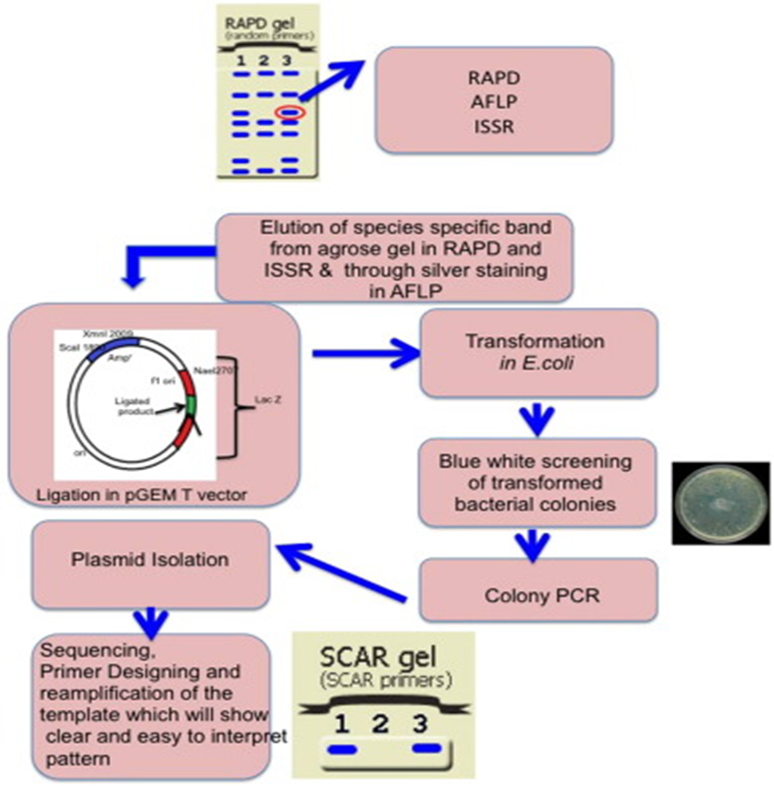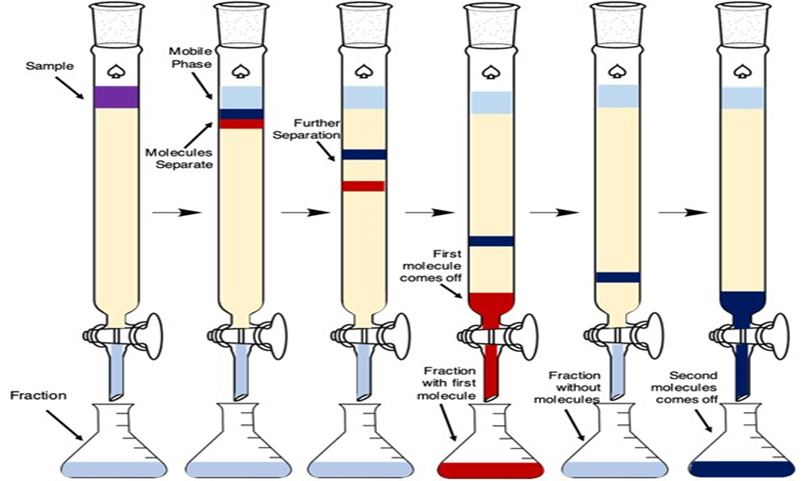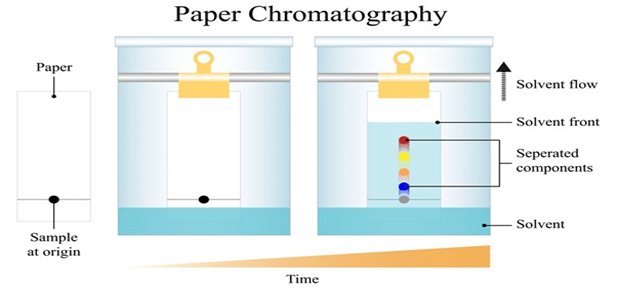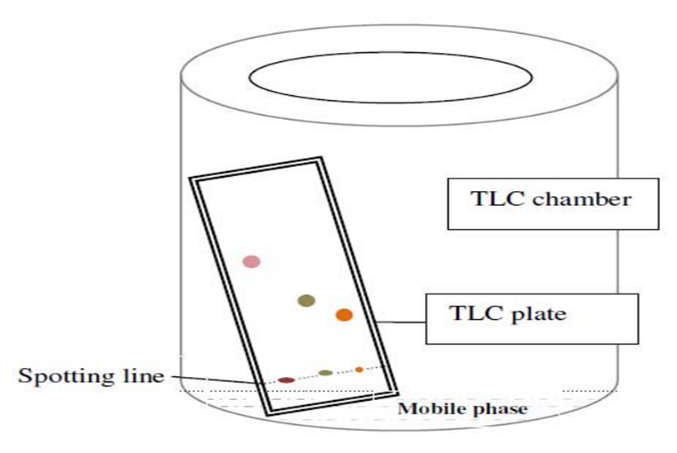Abstract
Modern scientific techniques and ancient herbal practices are used in advanced herbal technology to improve the safety, efficacy, and uniformity of herbal products. This field includes cutting-edge extraction methods that increase the yield and bioavailability of active chemicals, such as ultrasonic-assisted extraction and supercritical fluid extraction. Additionally, precise phytochemical profiling is made possible by sophisticated analytical techniques like mass spectrometry and high-performance liquid chromatography (HPLC), which guarantee consistency and quality control. The use of nanotechnology in the formulation of herbal medicines to improve their delivery and therapeutic potential is another recent breakthrough. Furthermore, bioinformatics is essential for determining the synergistic effects of herbal ingredients, which directs the creation of more potent therapies. In addition to preserving the rich history of herbal medicine, this multidisciplinary approach brings it into line with current healthcare requirements and opens up new research and marketing opportunities for the herbal sector. The continued use of cutting-edge herbal technology holds the potential to improve the standing of herbal products in international health markets by making them safer and more efficient for users.
Keywords
Phytochemistry, Bioavailability, Extraction Techniques, Standardization, Formulation Development, Nanotechnology, Efficacy and Safety.
Introduction
The creative use of contemporary technologies and scientific principles to improve the production, extraction, formulation, and distribution of herbal products is known as advanced herbal technology. These technologies combine state-of-the-art research in materials science, biotechnology, and pharmacology with traditional knowledge of medicinal plants. The objective is to preserve the natural integrity of herbal-based products while enhancing their efficacy, safety, and consistency. This strategy incorporates cutting-edge tactics including plant genetic engineering, enhanced extraction techniques like supercritical fluid extraction (SFE), and medicine delivery systems based on nanotechnology. The need for herbal remedies has grown globally in recent years, leading to notable developments in herbal technology. High-performance liquid chromatography (HPLC) is one technique that is being utilised to guarantee the potency and purity of plant components. The creative use of contemporary technologies and scientific principles to improve the production, extraction, formulation, and distribution of herbal products is known as advanced herbal technology. These technologies combine state-of-the-art research in materials science, biotechnology, and pharmacology with traditional knowledge of medicinal plants. The objective is to preserve the natural integrity of herbal-based products while enhancing their efficacy, safety, and consistency. This strategy incorporates cutting-edge tactics including plant genetic engineering, enhanced extraction techniques like supercritical fluid extraction (SFE), and medicine delivery systems based on nanotechnology. The need for herbal remedies has grown globally in recent years, leading to notable developments in herbal technology. Nowadays, methods like high-performance liquid chromatography (HPLC) are employed to guarantee the potency and purity of plant constituents, while screening for bioinformatics and phytochemicals
Different method of identification of plant: -
1. Morphological characteristics:
Identification of plants based on physical characteristics, such as leaf shape, flower structure, and general growth form, is known as morphological characteristics. This approach is frequently used in traditional field manuals.
2.Taxonomic Keys:
Using a methodical approach to identification, dichotomous keys let users select from a number of options based on observable characteristics.
3. Molecular Techniques:
Particularly for closely related species, DNA barcoding and other genetic techniques provide accurate identification based on genetic markers.
4.Ecological and Habitat Assessment:
It might be useful, especially in conservation situations, to identify plants according to their ecological needs and the ecosystems in which they flourish.
5.Remote sensing:
By examining spectral fingerprints and land cover, technologies like drones and satellite photos may identify plant species.
Plant authentication: -
Herb authentication is a quality assurance process that ensures the right plant species and plant parts are used as raw materials for herbal medicines. Appropriate raw material authentication is necessary for herbal medications to be both safe and effective. The issue is resolved when morphological, anatomical, chemical, and DNA indicators distinguish the authentic substance from imitations, adulterants, and fake drugs.[4].Using molecular biology techniques to confirm the legitimacy of medicinal plants Herbal medicines have gained popularity as botanical supplements in the United States. Lead chemical sources and natural treatments for Production of medications. An estimated 5.1 billion dollars were spent by US users and consumers in 1997. Of natural cures. Authentication of therapeutic plants is therefore essential. Morphological, anatomical, chemical, and DNA markers that differentiate genuine material from adulterants, imitations, and counterfeit drugs address the problem.DNA and anatomical chemical indicators that differentiate genuine products from fakes, imitations.
Types of authentication method :-
Phytochemical Analysis:
To identify and measure the active ingredients in herbal products, methods such as Gas Chromatography-Mass Spectrometry (GC-MS) and High-Performance Liquid Chromatography (HPLC) are employed. This aids in confirming the existence of particular phytochemicals linked to the stated health advantages.
DNA barcoding:
This molecular method recognizes and verifies plant species by using particular DNA sections. When it comes to identifying closely related species and making sure the right plant is utilized in herbal compositions, it is especially helpful.
Microscopy:
By revealing unique cellular structures through microscopic analysis of herbal materials, species can be recognized and verified according on their morphological traits.
Methods of Spectroscopy:
Methods like Ultraviolet-Visible Spectroscopy (UV-Vis), Nuclear Magnetic Resonance (NMR), and Infrared Spectroscopy (IR) might help authenticate herbal items by revealing their chemical makeup.
Bioassays:
Assessing herbal extracts' biological activity can be used as a kind of authentication to make sure the product has the bioactive substances that give it its therapeutic properties

Fig 1.Methods of authentication of plant
Extractions of herbs:-
Definition:-
Herb extraction is the process of employing different solvents and methods to extract active chemicals from plant sources. Desired phytochemicals, including flavonoids, alkaloids, and essential oils, can have their concentration increased by this method, increasing their bioavailability for medicinal purposes. Maceration, distillation, cold pressing, and solvent extraction are examples of common extraction techniques. 1.Solvent extraction method:-
A method for separating substances according to how soluble they are in various solvents is called solvent extraction. It entails dissolving a target material in a solvent so that it may be separated from other ingredients or contaminants in a combination. This technique is frequently used in chemistry to purify chemicals and in a variety of industries, such as environmental analysis, food processing, and pharmaceuticals.
Applications:
Essential oils, metal ion separation, and the isolation of bioactive chemicals from plant sources are all accomplished using solvent extraction.
2.Liquid-Liquid Extraction:
This technique uses two immiscible liquids to separate substances according to how soluble they are.
3.Solid-Phase Extraction (SPE):
This method keeps some analytes while removing undesirable components by passing a liquid sample through a solid adsorbent.
4.Supercritical fluid extraction,
or SFE, is a technique used primarily in the food and pharmaceutical industries to extract chemicals using supercritical fluids, most often carbon dioxide.
5. Ultrasonic Extraction:
This method shortens the extraction time and increases yield by utilizing ultrasonic waves.
6.Maceration:
This age-old technique allows the extraction of soluble chemicals by soaking plant materials in a solvent for a while.
Application of extraction Techniques:-
1.Pharmaceuticals:
Extraction techniques are crucial in isolating active compounds from natural sources for drug development. For example, solvent extraction is commonly used to extract alkaloids from plant materials.
2.Food Industry:
Supercritical fluid extraction (SFE) is employed to obtain essential oils and flavor compounds from herbs and spices without using harmful solvents.
3.Environmental Science:
Solid-phase microextraction (SPME) is used for sampling and analyzing volatile organic compounds in air and water samples.
4.Cosmetics:
Extraction methods like cold pressing and maceration are utilized to obtain natural oils and extracts for cosmetic formulations
5.Biotechnology:
Enzymatic extraction is increasingly used to improve yields of bioactive compounds from plant materials in nutraceutical applications
Chromatographic techniques in herbal drug analysis :-
Chromatography is based on the notion that mixtures of molecules delivered to the solid and liquid stationary phases (stable phases) can be separated while moving with the help of a mobile phase. Effective components in this separation process include molecular weight affinity or fluctuations and adsorption-related chemical properties. Effective elements of this separation procedure include the identification of molecules linked to adsorption and molecular weight affinity or differences. There are three steps in the chromatography process. Phase of stationarity: This procedure usually involves a “solid” phase or “a fluid stratum adsorbed by a solid support on the surface.” Motion stage: The constituents in this case are “oil” or a “gaseous component.” A molecular structure that is divided. A special molecule exists.
Introduction to Chromatography:-
Chromatography is an analytical method used to identify, separate, and purify the constituents in a mixture. The idea behind this is because solutes interact differently with two distinct phases (the stationary phase and the mobile phase). Many compounds can be found using this method. They manage The components are held separately in the pure solvent according to their solubility while the combination to be separated in a stationary phase (solid or liquid) and a pure solvent, such as water or any mixed gas (mobile phase), is permitted to travel gently over the stationary phase.
Types of Chromatography:
Column chromatography
Ion-exchange chromatography
Paper chromatography
Thin-layer chromatography
Gas chromatography
High- performance liquid chromatography (HPLC).
High-pressure thin layer chromatography (HPTLC)
Column chromatography:
Chromatographic techniques can be used to separate proteins based on their respective sizes, structures, net charges, solid phases, and binding abilities. The technique that employs these methods the most is column chromatography. This method makes it possible to purify biomolecules. The mobile phase, also known as wash buffer, is added to a column after the stationary phase of the material to be separated. They are guaranteed to get through the inner column material, which is supported by fiberglass. When the mobile phase and the mixture to be separated are introduced from the top of the column, the various components of the mixture move at varying speeds.Components with higher adsorption and affinity bind to the stationary phase more slowly than those with lower adsorption and affinity. The slower-moving parts are removed after the faster-moving ones. Column chromatography.

Fig No :2 Column chromatography
Paper chromatography:
Synge and Martin made the initial discovery of this technology in 1943. One particular kind of technology that works on a particular piece of paper is paper chromatography. It is a kind of planar chromatography where substances are separated using cellulose-based filter paper, which serves as a stationary phase. The technique, which is reasonably inexpensive, aids in the separation of dissolved chemical substances based on how quickly they migrate across paper sheets. Only a very small amount of sample is needed for analysis with this procedure.Partition is the fundamental idea of paper chromatography, where different components are distributed or separated between liquid phases. The aqueous solvent used in the filter paper’s pores serves as the stationary phase, while the mobile phase passes over the paper.

Fig No.3 Papper Chromatography
Thin-layer chromatography:
This technique employs a thin glass plate coated with silica gel or aluminum oxide as the solid phase. The solvent used as the mobile phase is selected based on the characteristics of the mixture's constituent parts. The distribution of a chemical between a liquid mobile phase that is moving across the solid phase and a solid fixed phase that is placed to a glass or plastic plate is the basis of TLC. A starting point slightly above the TLC Plate's bottom is treated with a tiny quantity of a compound or combination. After that, the plate is developed in a developing chamber with a shallow solvent pool directly below the sample application level. Capillary action draws the solvent up through the plate’s particles, and as the solvent passes over the mixture, each component either dissolves in the solvent and travels up the plate or stays with the solid phase. The physical characteristics of that particular molecule, and consequently its molecular structure—particularly its functional groups—determine whether the chemical advances along the plate or remains behind.

Fig No.4Thin Layer Chromatography
High-performance thin layer chromatography (HPTLC) :
The science of analytical chemistry can be summed up as the act of discovering information about a sample by some kind of chemical analysis. A compound can be solid, liquid, or gaseous. Create the sample under investigation, and the analysis will yield information of some kind that will be pertinent to the initial question raised regarding the sample. The data collected during the investigation can provide some insight into the sample. This data may be quantitative or qualitative. While quantitative information provides numerical information, such as the quantity of different chemicals in the sample, qualitative information includes things like the types of atoms, molecules, functional groups, or other qualitative measures. These days, computer software handles data processing and instrument control, while an analytical equipment of some kind does the actual analysis in an analytical chemical analysis.

Fig No 5.High-performance thin layer chromatography (HPTLC)
CONCLUSION: -
The confluence of traditional herbal methods with contemporary scientific study is highlighted by the conclusion of advanced herbal drug technology. This method not only makes herbal medications safer and more effective, but it also makes it easier to standardize and monitor the quality of herbal goods. The possibility for creating novel treatments that make use of the bioactive substances present in plants is therefore increasing. Additionally, cutting-edge methods like genomics, metabolomics, and nanotechnology are opening the door to more specialized and efficient therapies, guaranteeing that herbal remedies can contribute significantly to modern healthcare. All things considered, herbal medication technology appears to have a bright future thanks to continuous research and development targeted at increasing its uses and enhancing patient results.
REFERENCES
- Zhou, J., et al. (2020). Recent Advances in the Application of Nanotechnology in Herbal Medicine. Frontiers in Pharmacology, 11, 585420.
- Feng, X., et al. (2021). Advances in the Extraction and Processing of Herbal Medicine Using Supercritical Fluid Technology. International Journal of Molecular Sciences, 22(1), 228.
- Baskar, R., et al. (2020). Therapeutic Effects of Herbal Medicine: From Traditional Use to Modern Drug Development. Phytotherapy Research, 34(9), 2329-2344.
- McKenny, C. (2012). Plant Identification: A Practical Guide to the Techniques and Tools. London: Academic Press
- McCulloh, K. (2007). Dichotomous Keys in Plant Identification. Journal of Botany, 89(4), 450-459.
- Hebert, P. D. N., et al. (2003). Biological Identifications through DNA Barcodes. Proceedings of the Royal Society B, 270(1512), 313-321.
- Whittaker, R. J., & Fernández-Palacios, J. M. (2007). Island Biogeography: Ecology, Evolution, and Conservation. Oxford: Oxford University Press.
- Pettorelli, N., et al. (2014). Satellite Remote Sensing for Applied Ecological Research. Trends in Ecology & Evolution, 29(1), 44-51.
- Sim Co, Hamdan Mr, Ismail Z And Ahmad Mn,( 2004) Assessment Of Herbal Medicines By Chemometrics – Assisted Interpretation Of Ftir Spectra, Journal Of Analytica Chimica Act,: 412-450.
- Sharma, A., et al. (2020). “Phytochemical screening and bioactivity of herbal drugs.” Journal of Herbal Medicine, 21.
- Hollingsworth, P. M., et al. (2016). “DNA barcoding for plants.” Nature Plants, 2.
- Khan, M. I., et al. (2019). “Microscopy as a tool for authentication of herbal medicines.” Pharmacognosy Reviews, 13(26).
- Rohman, A., & Man, S. (2014). “Application of spectroscopic techniques in the quality control of herbal medicines.” Journal of Medicinal Plants Research, 8(2).
- Vijayakumar, M., et al. (2018). “Bioassays in the quality control of herbal medicines.” Journal of Ethnopharmacology, 225.
- Houghton, P. J., & Raman, A. (1998). “Laboratory Handbook for the Fractionation of Natural Extracts.” Phytochemical Analysis, 9(5), 275-281.
- Pritchard, J. (2015). “Solvent Extraction in Analytical Chemistry: A Review.” Journal of Chromatography A, 1423, 1-12.
- H. A. H. Ahmed, “Liquid-Liquid Extraction of Metal Ions: A Review,” Analytical Sciences, vol. 20, no. 12, pp. 1201-1207, 2004.
- A. J. S. Ferreira, “Solid-Phase Extraction: Principles and Applications,” TrAC Trends in Analytical Chemistry, vol. 27, no. 1, pp. 13-27, 2008.
- C. H. Lee et al., “Supercritical Fluid Extraction: A Review,” Journal of Food Science and Technology, vol. 45, no. 4, pp. 437-446, 2008.
- S. J. K. Varma, “Ultrasonic Extraction: A Green Approach,” Journal of Chemical Technology and Biotechnology, vol. 84, no. 2, pp. 197-203, 2009
- J. M. Martinez et al., “Maceration as a Method of Extraction,” Journal of Ethnopharmacology, vol. 92, no. 1, pp. 11-15, 2004.
- Kaur, M., & Singh, A. (2018). “Extraction of Bioactive Compounds from Plants: A Review.” International Journal of Pharmacy and Pharmaceutical Sciences, 10(5), 1-7.
- Cossu, M., & Mariani, A. (2018). “Supercritical Fluid Extraction of Essential Oils.” Food Chemistry, 267, 270-277.
- Pawliszyn, J. (2012). “Solid Phase Microextraction: Theory and Practice.” Chemical Reviews, 112(10), 4228-4245
- Silva, J. P., et al. (2020). “Natural Products in Cosmetics: Extraction and Applications.” Journal of Cosmetic Dermatology, 19(7), 1653-1661.
- Raghav, S. K., & Shukla, R. (2019). “Enzymatic Extraction of Bioactive Compounds: A Review.” Biotechnology Advances, 37(7), 107339.
- Ashwini. R. Patil, Prajkta. M. Ghagare, Bhavna. J. Deshmane, Manish . S. Kundawar, Review On Chromatography Principal Type And It’s Application , Res. J. Pharma Dosage From And Technic 2020:12(J) Page No. 27
- Khushboo Gupta , Pranjul Shrivastava , Sudeep Mandal , Amarjeet Projapati , Bharti Patel, An Overview Of Chromatography International Journal Of Creative Research Thought ., 2020. Page No . 520
- Dr. Tushar P. Dukre, Sagar. S. Sangle, Akash. K. Shelke, Nilesh. M. Chattar , Dhananjay. D. Narsale., A Review On Column Chromatographic Techniques As Separation Method , Iconic Research And Engineering Journal , 2023 Page No. 116
- Mukta Gupta, Bhupinder Kapoor , Renna Gupta, A Review On Paper Chromatography., Journal Emarging Technologies And Innovative Research 2018 , Page No. 462
- Sanjeet Kumar, K. Jyotirmayee, Monalisa Sarangi, Thin Layer Chromatography ;A Toll Of Biotechnology For Isolation Of Bioactive Compounds From Medicinal Plant., International Journal Of Pharmaceutical Science , 2013 . 18 (1) , Page No. 126
- Rachit Shukla, Prashant Kumar Singh, Savita Upadhyay., A Comprehensive Review Of High-Performance Thin Layer Chromatography International Journal Of Pharmacy &Pharmaceuticals Reserch., 2023 , Page No-399


 Gavhane Prasad Balasaheb *
Gavhane Prasad Balasaheb *
 Dr.Pawan S Avahd
Dr.Pawan S Avahd
 Sanap Tushar Khanderao
Sanap Tushar Khanderao
 Badwar Onkar Satish
Badwar Onkar Satish





 10.5281/zenodo.14210750
10.5281/zenodo.14210750